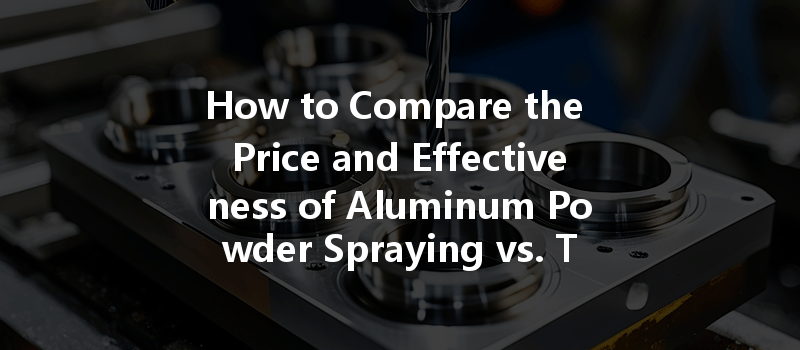: Elevating Industries Through Innovation
In a world driven by rapid technological advancements, the precision of manufacturing processes is paramount. At YL Machining, we believe that the success of any engineering project hinges on two fundamental aspects: choosing the right materials and applying the most effective surface treatment techniques. Among these techniques, aluminum surface treatment plays a critical role, influencing product performance, longevity, and aesthetic appeal.
In this deep dive, we will explore everything you need to know about aluminum surface treatment, focusing primarily on thermal spraying and aluminum powder spraying. We will provide a detailed comparison of the two methods, revealing their intricacies, benefits, applications, and practical implementations.
Section 1: Understanding Aluminum Surface Treatment
1.1 What is Surface Treatment?
Surface treatment refers to a variety of processes designed to alter the physical and chemical properties of a material’s surface. These processes can enhance corrosion resistance, wear resistance, and aesthetic properties, all crucial for extending product lifespan and functionality.
1.2 Why Focus on Aluminum?
Aluminum is a popular choice in many industries due to its lightweight, durability, and resistance to corrosion. However, while these properties make aluminum an excellent base material, surface treatments are frequently required to optimize performance under specific conditions.
Section 2: Types of Surface Treatment Processes
Before we delve into the specifics of aluminum powder spraying and thermal spraying, let’s first understand some of the common surface treatment methods available:
2.1 Overview of Thermal Spraying
Thermal spraying is a sophisticated method where molten or semi-molten materials are projected onto a substrate. This creates a coating that adheres to the surface, enhancing its properties.
Key Thermal Spraying Techniques:
2.2 Understanding Aluminum Powder Spraying
Aluminum powder spraying is a specific type of thermal spraying that employs aluminum powder as the primary material for coating.
Process Description:
Section 3: Comparing Price and Effectiveness
3.1 Cost Analysis
Initial Investment
Operating Costs
3.2 Effectiveness Metrics
Effectiveness can be broken down into several critical metrics, including adhesion strength, corrosion resistance, and material versatility.

Adhesion Strength
Corrosion Resistance
Versatility
Section 4: Applications of Aluminum Surface Treatment
Aluminum surface treatment techniques find their utility in diverse industries:
4.1 Real-World Examples
At YL Machining, we’ve provided tailored solutions for various applications. For instance, in the aerospace sector, thermal spraying was employed to enhance both the aerodynamic efficiency and lifespan of plane components through serious testing and stringent quality control protocols.
Section 5: Key Considerations in Selecting a Process
When choosing between aluminum powder spraying and thermal spraying, consider the following:
Section 6: Challenges and Solutions in Aluminum Surface Treatment
6.1 Common Challenges
Aluminum, while beneficial, also poses some challenges during surface treatment:
6.2 Innovative Solutions
At YL Machining, we proactively address these issues:
: The Future of Aluminum Surface Treatment
As the world moves toward more innovative and better-engineered products, the importance of effective aluminum surface treatment cannot be overstated. Both thermal spraying and aluminum powder spraying offer unique advantages that cater to different industrial needs. By understanding the intricacies of these processes, companies can make informed decisions, maximizing both the cost-effectiveness and the performance of their aluminum components.
At YL Machining, our commitment to precision, quality, and innovation ensures that we remain at the forefront of the machining industry, ready to tackle the challenges of the future. By continuously investing in R&D and refining our processes, we aim to provide our customers with tailored solutions that meet the dynamic demands of their industries. The journey of exploring aluminum surface treatment is just beginning, and we invite you to join us on this transformative path.






